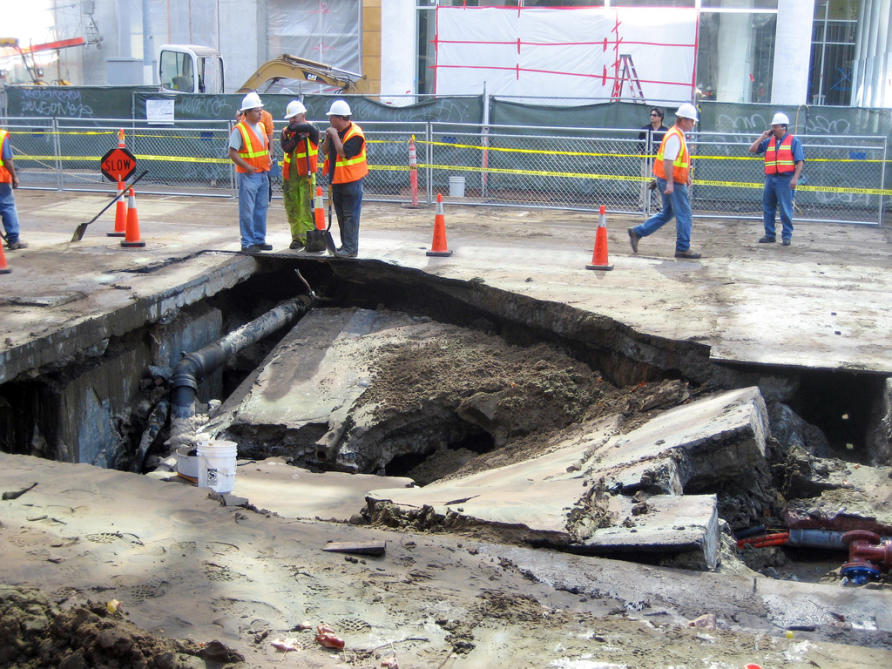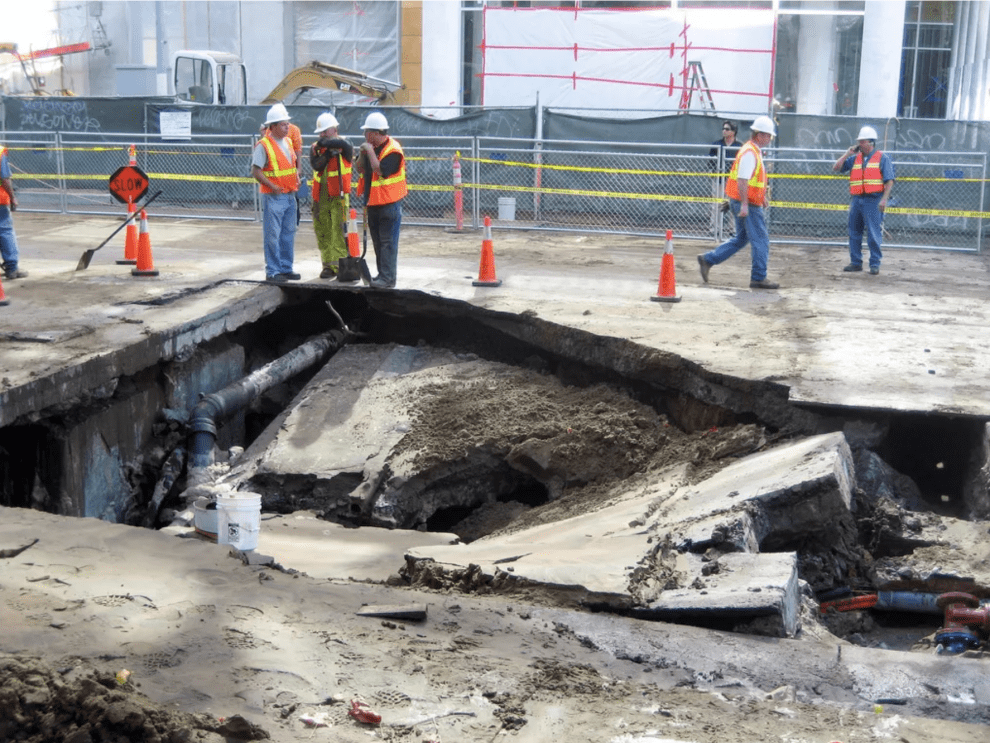Have no fear. It might seem as if the earth is opening up everywhere around us, but it’s down to a mix of factors, from geology to human behaviour.
Grown men shed tears when they discovered eight vintage Corvette luxury cars were swallowed by a sinkhole when one opened up in the middle of the Corvette Museum in Kentucky in 2014.
Sinkholes are patches of the earth surface that collapse, forming an abyss. In urban areas they have swallowed entire houses and parking lots.
Security cameras have captured the collapse of sinkholes in streets, roads, freewaysand beaches. So why do sinkholes happen? And can we predict them? Are they naturally occurring? Has human activity made them a more common occurrence?
One only needs to look at the different layers of rock cutaways on freeways to realise the earth is a dynamic thing, transformed by not only plate tectonics, volcanoes, earthquakes but also weather, plants and humans.

Associate Professor Mark Quigley is a University of Melbourne earthquake researcher, who interprets landscapes and geological records like a text, to refine earthquake and disaster prediction. One of his research projects explores the earthquake sinkhole connections that shed light on earthquake analysis.
“There are different types of sinkholes, some are underground caves that are hollow voids and others are filled with limestone. The third type has pockets of sediment or rock that is softer than the surrounding material,’’ he says.
“These features are all zones of weakness underneath the surface and different processes can destabilise the overlying material, like the roof of a cave, leading to the ultimate collapse of the top surface.
“So whilst we know the geological features of sinkholes, the triggers, the tipping points and the speed and impact of the eventual collapses varies enormously.
“Some sinkhole collapses can be a slow creep over years, others can happen within seconds especially when shaken by an earthquake.’’
However, some sinkholes can be induced by agricultural activity that changes the water table, Associate Professor Quigley explains.
“We see this in California, the ground water extraction has resulted in certain areas and landscapes coming down by 10 metres, because when you withdraw the water out of deep aquifers you also remove water from the sub surface layers and some are more collapsible than others.
“The giant deep sinkholes in Florida are typically in limestone structures. The calcium-rich limestone was formed from the compaction of deposits of marine sea creatures like corals and fish of millions of years ago.

“Ground water fills the spaces and water pressure holds the structure up but acidic ground water can dissolve the limestone or human agricultural activity can cause a shift in the water table which also can result in collapse.
“Sinkholes can also occur in cities where the sub soil layers are siltstone and mudstones once deposited by ancient riverbeds and swamp.
“If underground water pipes leak the water can start to turn the soft solid structure into a liquid in which things sink or even wash away. These can result in sinkholes.”
Associate Professor Quigley knows a thing or two about liquefaction, where solid soil turns into a liquid especially after being shaken by an earthquake. He even dug up his own backyard in New Zealand after the Christchurch earthquakes to see if there was past evidence of liquefaction in the distant past. There was.
“I study the geologic records but I also study disasters like earth quake, rock falls and liquefaction, to turn disasters into useful knowledge.”
Earth scientists, town planners and engineers often collaborate to make cities safer. Robotic sewer cams look for leaks and various geophysical detection devices can monitor populated areas.
“Scientists can identify and monitor and even predict some sinkholes. They measure the velocity of seismic waves, the water content and the density of the material around sinkholes which often changes compared to the surrounding areas, and we can track the presence of sinkholes in time and space.
“Geophysics helps with prediction so areas can be can be avoided for certain types of development or plans can be made to improve the ground material and structures around them to avoid major damage occurring.’’
“This article was first published on Pursuit. Read the original article.”























Add Comment